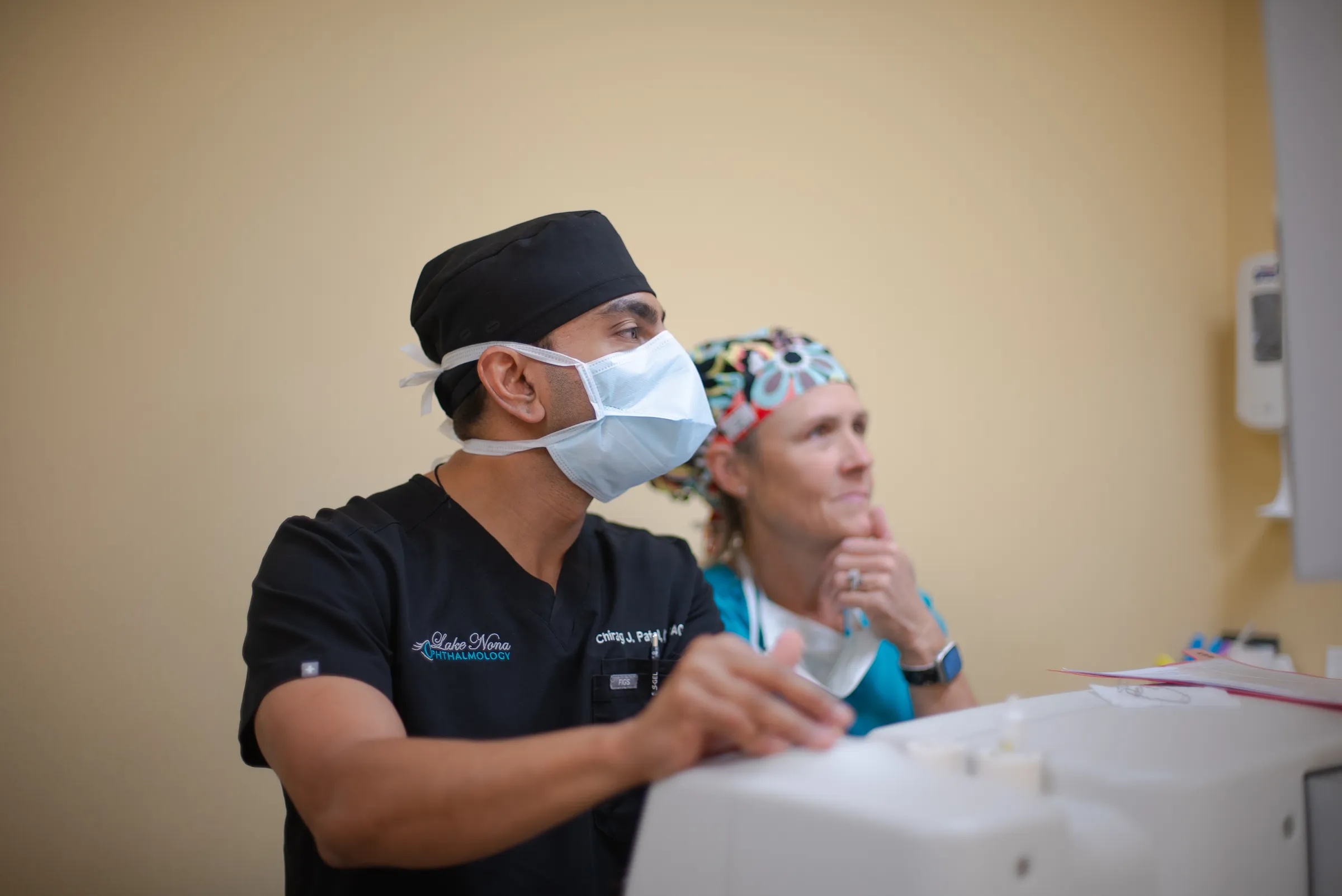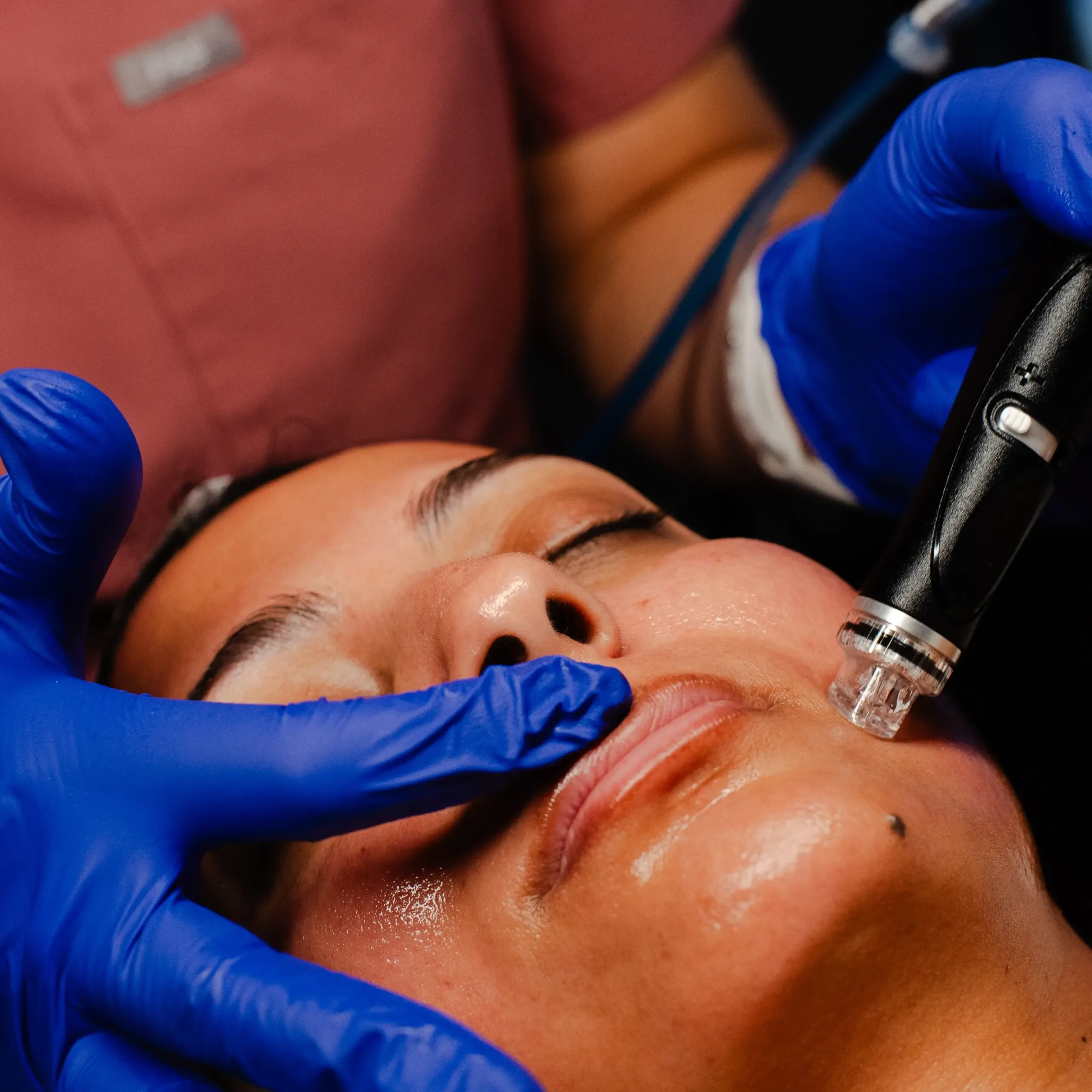Expert Care for
Pterygium Treatment
At Lake Nona Ophthalmology, we provide advanced treatments for pterygium, a common eye condition that affects many individuals. Our team of skilled ophthalmologists is committed to offering personalized care using the latest surgical techniques and innovations to ensure the best outcomes for our patients. If you have been diagnosed with a pterygium or are experiencing symptoms, we are here to guide you through your treatment options and help you maintain optimal eye health.

What is a Pterygium?
A pterygium is a benign growth of tissue that typically forms on the conjunctiva (the clear membrane covering the white part of the eye). It often extends onto the cornea, the clear dome-shaped surface at the front of the eye. Pterygia (the plural of pterygium) can cause discomfort, redness, and irritation, and in some cases, they may interfere with vision if they grow large enough or invade the cornea. While pterygium is usually non-cancerous, it can lead to vision issues and be a source of cosmetic concern.

Causes and Risk Factors of Pterygium
The exact cause of pterygium is not fully understood, but several factors contribute to its development:
- UV Radiation Exposure: Prolonged exposure to ultraviolet (UV) light from the sun is the most significant risk factor for developing pterygium. People who spend a lot of time outdoors without proper eye protection are more likely to develop the condition.
- Environmental Factors: Wind, dust, and dry environments can irritate the eyes and contribute to the development of pterygium. Individuals living in areas with high exposure to these factors are at an increased risk.
- Genetics: A family history of pterygium may increase your likelihood of developing the condition. Genetic predisposition can influence the development and growth of the pterygium.
- Age: Pterygium is most commonly seen in adults between the ages of 20 and 50, but it can occur at any age.
- Other Eye Irritants: Chronic irritation or inflammation of the eyes can increase the chances of developing a pterygium. This includes frequent rubbing of the eyes, which can exacerbate the condition.

Symptoms of Pterygium
In its early stages, a pterygium may not cause noticeable symptoms. However, as it grows, it can lead to various signs and symptoms, including:
- Redness and irritation of the eye
- A feeling of something being in the eye (foreign body sensation)
- Dryness and itching
- Blurred vision or vision distortion (if the pterygium extends over the cornea)
- Cosmetic concerns due to the appearance of the growth
If you experience any of these symptoms, it’s essential to seek an evaluation from an experienced ophthalmologist to determine the best course of action.
Surgical Treatment for Pterygium
While many cases of pterygium can be managed with topical treatments such as lubricating eye drops or anti-inflammatory medications, surgery may be necessary if the pterygium is causing significant discomfort, affecting vision, or growing rapidly. Surgical removal is the most effective way to address pterygium and reduce the risk of recurrence.
At Lake Nona Ophthalmology, we specialize in advanced surgical techniques for pterygium removal, ensuring minimal discomfort and rapid recovery. Our approach focuses on using the latest innovations to improve outcomes and reduce the risk of recurrence.
Surgical Procedure
- Excision of the Pterygium: The first step in the procedure involves carefully removing the pterygium from the eye. The tissue is excised using specialized surgical instruments, ensuring precise removal with minimal disruption to surrounding tissue.
- Amniotic Membrane Grafting: To reduce the risk of recurrence, we use amniotic membrane grafting, a technique that involves transplanting a thin layer of amniotic tissue onto the area where the pterygium was removed. Amniotic membrane is rich in growth factors that promote healing and reduce inflammation, providing an optimal environment for recovery. It also helps to minimize the likelihood of the pterygium growing back.
- Mitomycin C (MMC): In some cases, Mitomycin C is applied to the surgical site to reduce the risk of recurrence. Mitomycin C is an anti-cancer drug that inhibits the growth of cells, preventing the regrowth of the pterygium. This treatment is used carefully to ensure safety and effectiveness in preventing pterygium recurrence.
- Fibrin Glue: To ensure the amniotic membrane graft adheres securely, we use fibrin glue, a biologic adhesive that promotes better graft integration and reduces the need for sutures. This approach not only enhances the healing process but also leads to a more comfortable and faster recovery for the patient.
Benefits of Surgical Treatment with Amniotic Membranes and Mitomycin C
The combination of amniotic membrane grafting, Mitomycin C, and fibrin glue offers several significant advantages for pterygium patients:
- Reduced Risk of Recurrence: The use of an amniotic membrane graft significantly lowers the chances of the pterygium growing back, a common challenge with traditional surgery.
- Faster Healing: The amniotic membrane promotes faster tissue healing, reduces inflammation, and helps minimize scarring.
- Minimized Discomfort: The fibrin glue used in our procedures reduces the need for sutures, resulting in less postoperative discomfort and a quicker recovery time.
- Enhanced Cosmetic Outcomes: With advanced techniques, the surgical site is left with minimal scarring, improving both the functional and aesthetic outcome.
- Improved Vision: For patients whose pterygium has affected their vision, surgery with these advanced techniques can restore clear vision by removing the growth from the cornea.
Why Choose Lake
Nona Ophthalmology?
At Lake Nona Ophthalmology, our commitment to providing the highest quality care, coupled with cutting-edge technology, sets us apart. We offer:
- Expertise and Experience: Our board-certified ophthalmologists have extensive experience performing cataract surgery with premium IOLs, including Toric lenses.
- Personalized Care: We understand that each patient is unique, and we work closely with you to create a customized treatment plan tailored to your vision goals.
- State-of-the-Art Technology: Our advanced diagnostic tools ensure precise measurements and optimal outcomes, allowing us to select the best Toric IOL for your eyes.
- Comprehensive Support: From your initial consultation through post-surgery care, we are with you every step of the way to ensure a smooth and successful experience.






